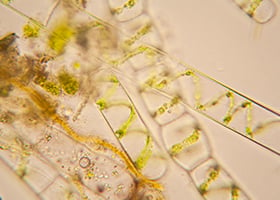Industrial Cultivation of Microalgae: Technologies, Applications and Challenges
A special issue of ChemEngineering (ISSN 2305-7084).
Deadline for manuscript submissions: closed (30 September 2022) | Viewed by 14725

Special Issue Editor
Special Issue Information
Dear Colleagues,
Industrial applications of microalgae are constantly growing, and research is fervent. However, many issues remain uncovered that may hinder an efficient technological transfer from academia to the world of production. What are the future applications of microalgae? Fuel, food, nutraceuticals, wastewater, agriculture are some amazing possibilities, but upscaling is still limited. Can the modeling approach help to overcome the several issues related to photosynthetic efficiency? How do the operating conditions affect the productivity? Is artificial light a sustainable alternative?
This Special Issue of ChemEngineering aims at updating our knowledge about technological and research advancements in this field.
Modeling and experimental manuscripts, as well as reviews dealing with the most significative microalgal-related processes and operations, are particularly welcome.
Dr. Eleonora Sforza
Guest Editor
Manuscript Submission Information
Manuscripts should be submitted online at www.mdpi.com by registering and logging in to this website. Once you are registered, click here to go to the submission form. Manuscripts can be submitted until the deadline. All submissions that pass pre-check are peer-reviewed. Accepted papers will be published continuously in the journal (as soon as accepted) and will be listed together on the special issue website. Research articles, review articles as well as short communications are invited. For planned papers, a title and short abstract (about 100 words) can be sent to the Editorial Office for announcement on this website.
Submitted manuscripts should not have been published previously, nor be under consideration for publication elsewhere (except conference proceedings papers). All manuscripts are thoroughly refereed through a single-blind peer-review process. A guide for authors and other relevant information for submission of manuscripts is available on the Instructions for Authors page. ChemEngineering is an international peer-reviewed open access semimonthly journal published by MDPI.
Please visit the Instructions for Authors page before submitting a manuscript. The Article Processing Charge (APC) for publication in this open access journal is 1600 CHF (Swiss Francs). Submitted papers should be well formatted and use good English. Authors may use MDPI's English editing service prior to publication or during author revisions.
Keywords
- growth modeling
- process simulation
- microalgal downstream
- artificial light
- industrial application of microalgae





